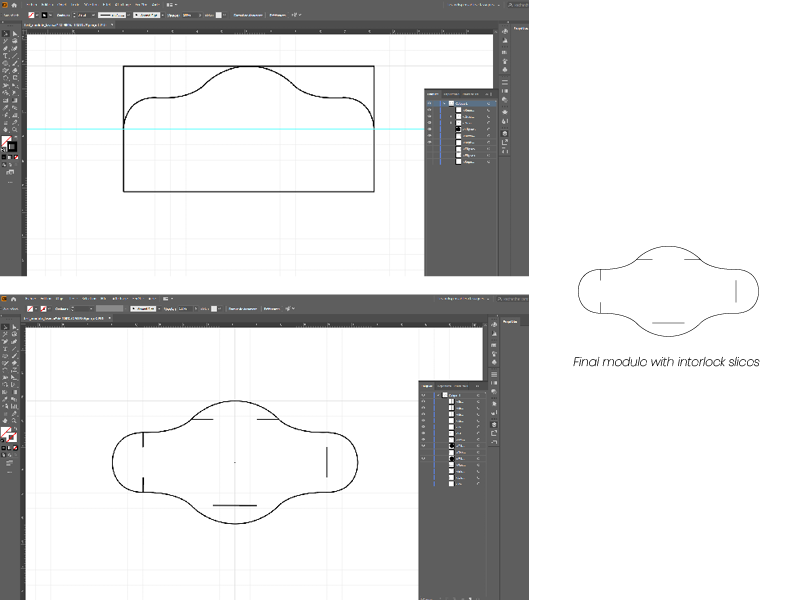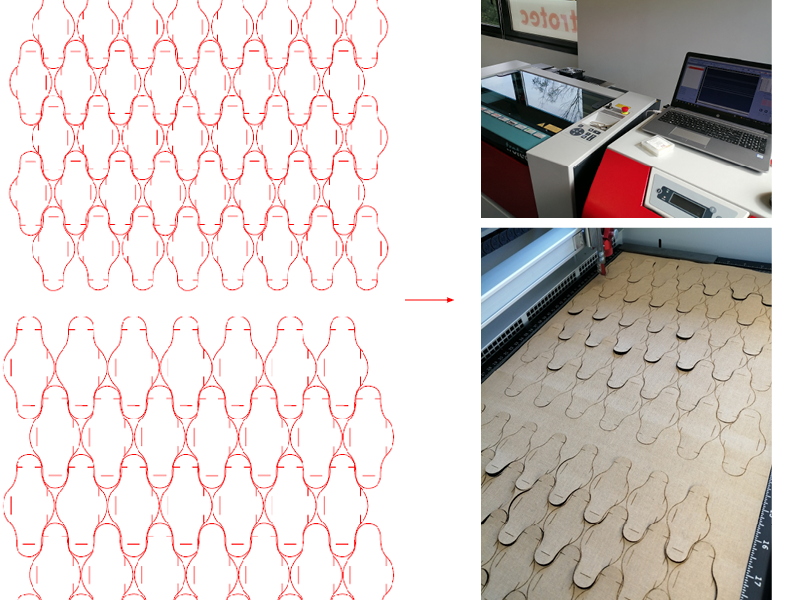3. Circular fashion¶

This week I focused on alternative systems, on open source, modular and circular fashion and open value chains. This week was introduced by Zoe Romano.
To add this week and this subject, Monday, Elisabeth Jayot presented her work : Frangment Garments, an inspiring project around modular fashion, zero waste and no seam system.
Link of the recitation
Production and creation of the week : The focus will be on creating modular elements, structures and connections that allow the user to change the shape of a garment, resize it or replace certain elements.

▼ How I realized that ? ▼
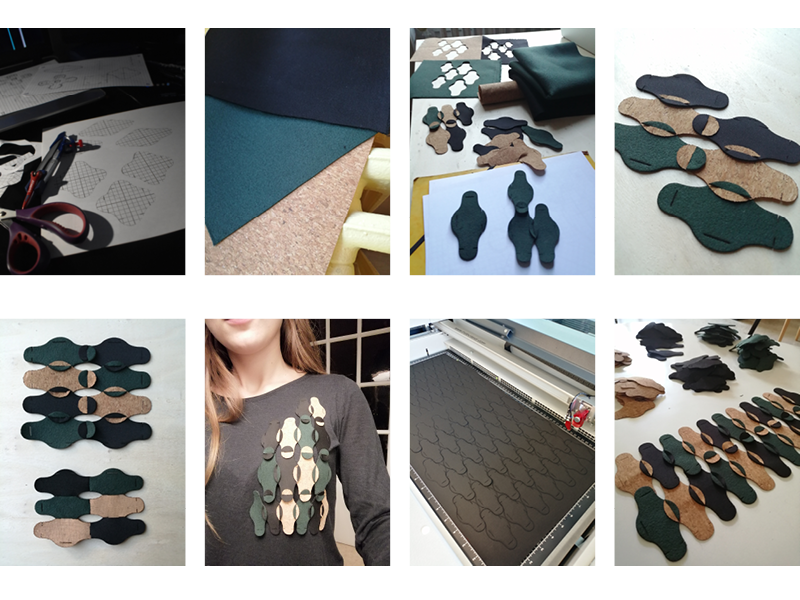
Research - References¶

For my research and my inspiration I was focus on pattern creation. When I saw different modules, I found interesting to play with these system and create a pattern by working fabrics, materials and colors. I am specialized in textile design, it was nice to me to active again my knowledge and to think a pattern.
So, I decided to choice an archetype pattern, the camouflage pattern and rethink it with the modular system.
Experimentation & Work of the week¶
Research on paper¶
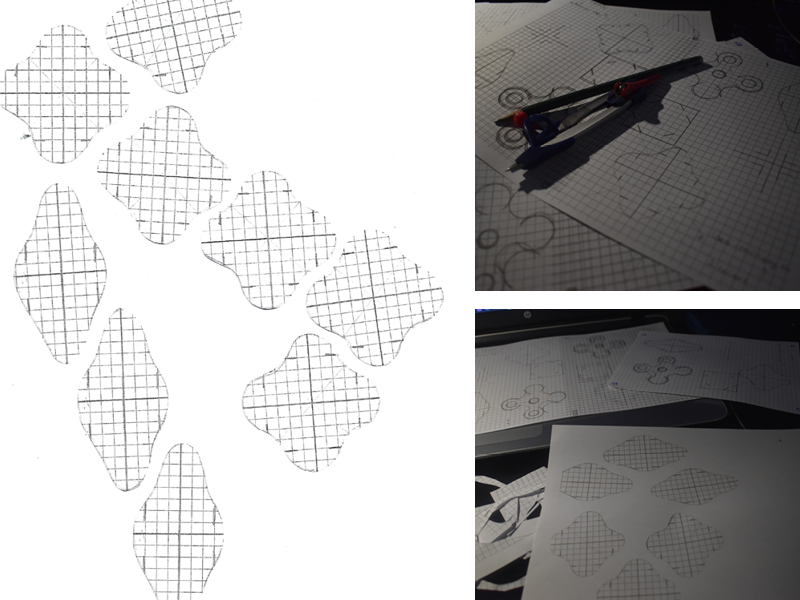
After my inspiration research I explored different module system with paper. I found a shape that satisfied me. This shape is ovale and asymmetrical. It reminds the camouflage pattern shapes.
File creation on software¶
Then, I followed tutorial on rhinoceros 3D by Anastasia Pistofidou, to create a vectore module / parttern in 2D. She showed many new command to use this software.
Some new commands on Rhinoceros 3D :
- Trim : to cut a line
- Extend
- Split : intersection cut
- Fillet
- Rotate
- Mirror
- Tween : to duplicate - repeat
- Offset
- Scale : dimension Active the center to rotate, move, expend from the center
- Array
- Break at a point
- Rebuild
- Inser : a new point
- Groupe
- Hide
- Flip
- Hatch
- Blend CRV
But I prefered to use Illustrator software to create my module this week.
To create my module on Illustrator : I create with line curve tools 1/4 of my modules and I used mirror function to create a perfect symmetry.
Then I have chosen three different materials, in three different colors and I experimented my module with a little laser cutting to see if the connection is good between the different materials and modules. The different materials are not the same proprieties, one of these is a cork material, an other is a felt and the last is a neoprene.
When I saw that my modules was good, with a good connection, I multiplied my modules in two sizes and disposed these on a page to the laser cut dimension and I exported my file in .pdf.
Laser cut on Trotec¶
** MATERIAL PROPERTIES**
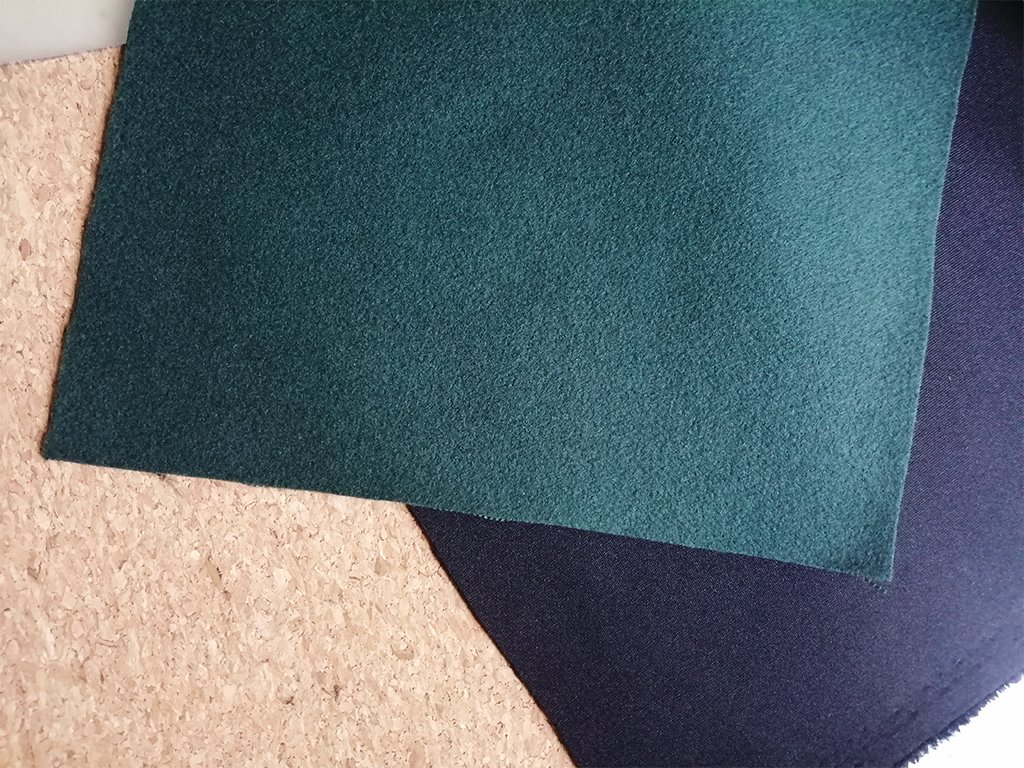
- Black one : Neopren
- Green one : Felt
- Brown one : Think Cork
I used JobControl software to cut my materials.
**SETUP : **
- Power : 25
- Time : 2.5
Construction - Final outcome¶
Processus of consctruction¶
To build my final outcome I worked two hours on this. I wanted to create a top because when I experimented my module whith two sizes join between, I realized that surface of modules created curves and shapes. It was perfect to adapted it with shape of body.

Final outcome¶
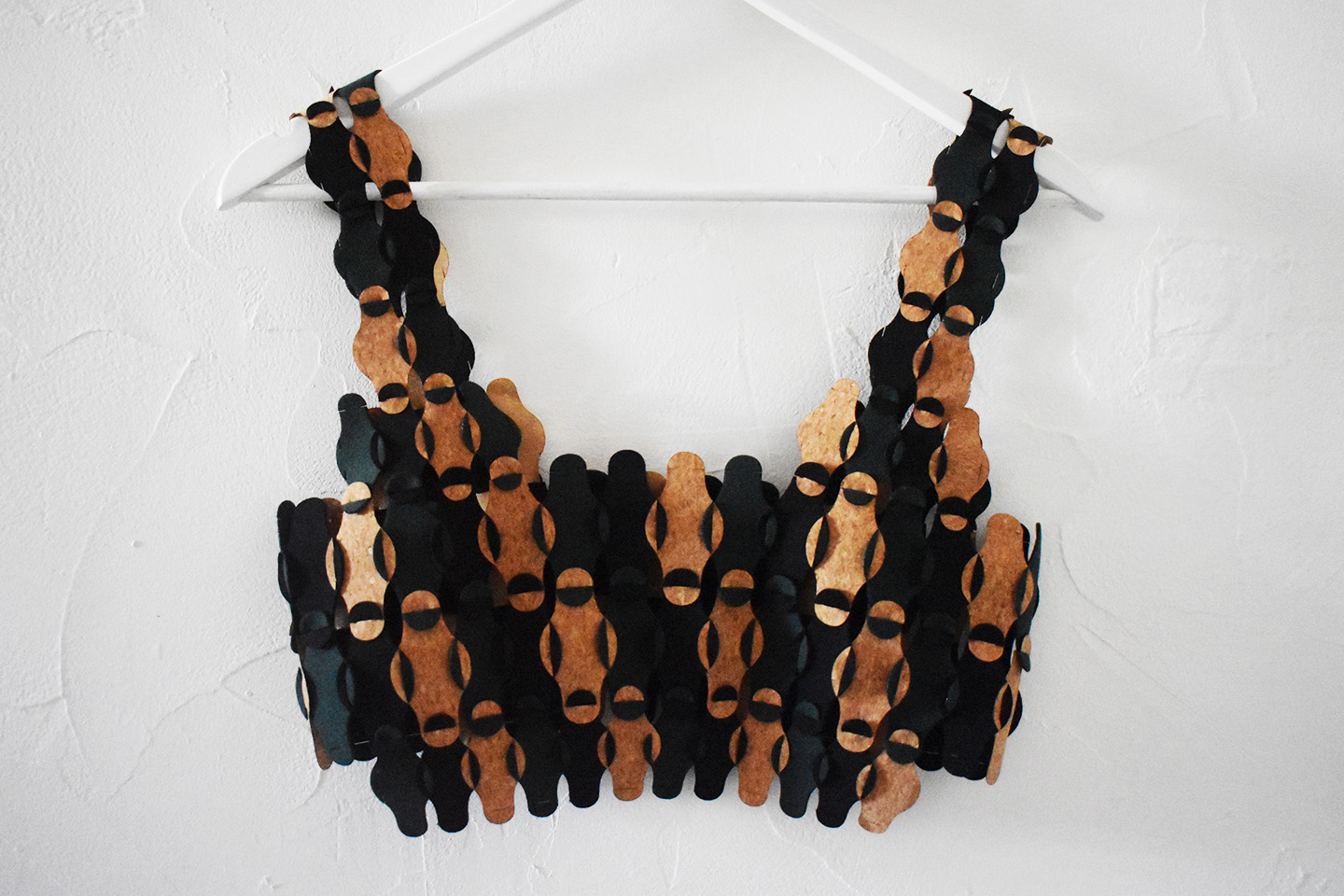
OS Circular Fashion¶
Open Source Circular fashion catalogue is an interface to find many open source creations (modular, pattern, recipe, zero waste).
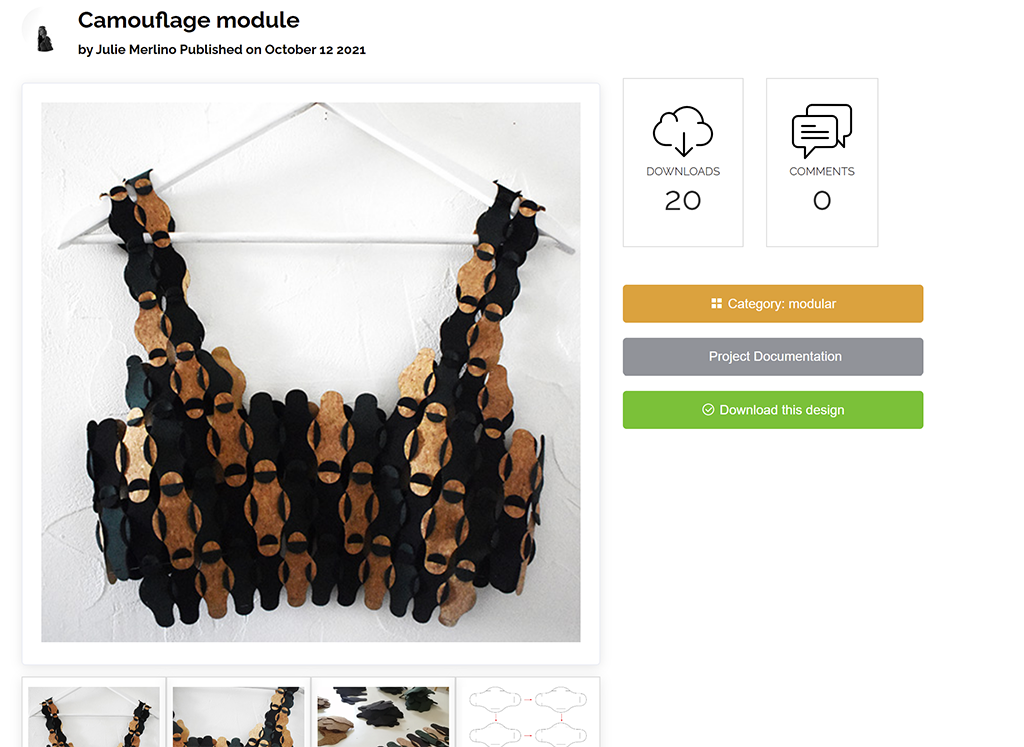
You could find and download my creation on OS Circular Fashion > Final Outcome on Os Circular
